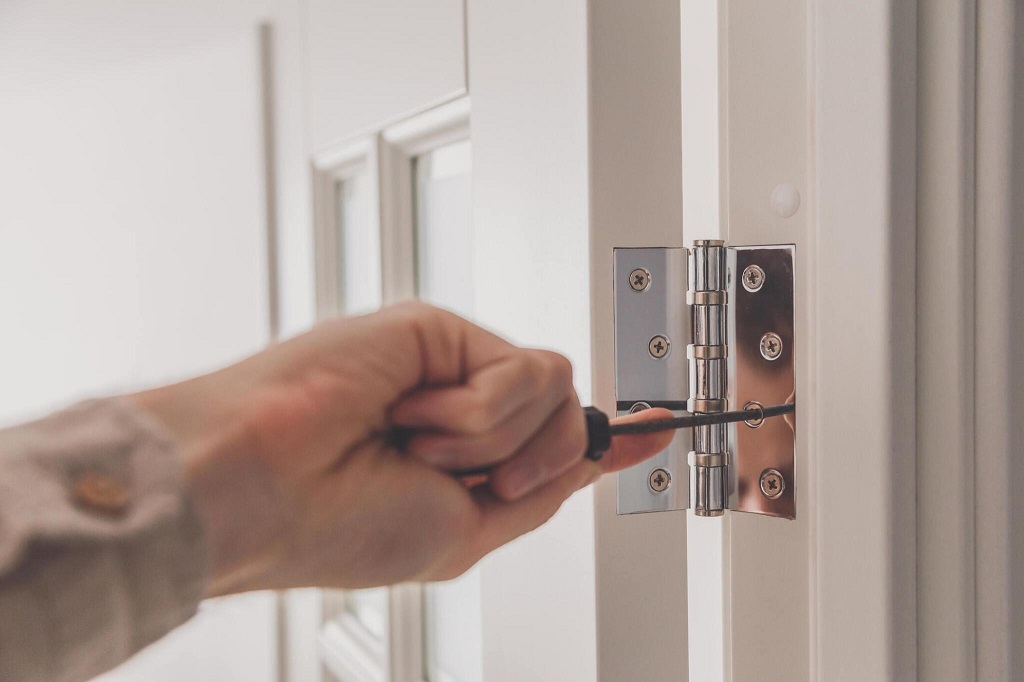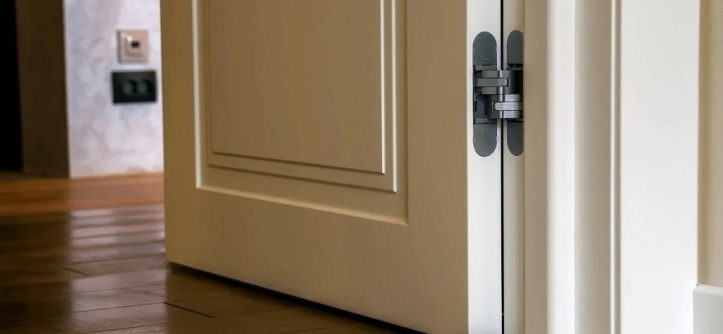Choosing the right door jamb can make or break your door installation project. Whether you’re renovating your home or building from scratch, understanding different jamb options helps ensure a professional finish. The door jamb forms the structural foundation of your doorway, affecting both functionality and aesthetics. At Decoracaos, we understand that selecting the proper door jamb types is crucial for long-term door performance and visual appeal.
Door jambs serve as the vertical frame components that support your door and provide a secure mounting point for hinges and strike plates. However, not all jambs are created equal. Different door jamb types offer unique advantages depending on your specific installation requirements, wall thickness, and aesthetic preferences.
The importance of selecting the correct jamb extends beyond mere functionality. Additionally, the right choice impacts your door’s alignment, security, and overall lifespan. Therefore, understanding the characteristics of each jamb type helps homeowners and contractors make informed decisions that prevent costly mistakes and ensure optimal results.
Flat Jamb: The Traditional Choice
Flat jambs represent the most common and straightforward door frame option available today. These jambs feature a simple, rectangular profile without any special cuts or modifications. Their popularity stems from versatility and ease of installation across various door types and wall configurations.
The primary advantage of flat jambs lies in their adaptability. They work well with both hinged and sliding doors, making them suitable for most residential applications. Furthermore, flat jambs accommodate different door thicknesses through the use of appropriate stop molding, which provides flexibility during installation.
Installation typically involves cutting the jamb to fit your wall thickness precisely. This process requires careful measurement but remains relatively straightforward for experienced installers. Moreover, flat jambs offer excellent stability when properly installed, creating a solid foundation for heavy doors or high-traffic areas.
Cost considerations make flat jambs attractive to budget-conscious homeowners. They generally cost less than specialized jamb types while providing reliable performance. However, they may require additional trim work to achieve a polished appearance, particularly in premium installations.
Rabbeted Jamb: Enhanced Door Security
Rabbeted jambs feature a distinctive groove or “rabbet” cut along the interior edge where the door sits when closed. This design creates a recessed area that provides superior door alignment and enhanced security compared to flat jambs. The rabbet acts as a natural stop for the door, eliminating the need for separate door stops in many cases.
Security benefits represent the primary advantage of rabbeted jambs. The groove creates a tight seal around the door perimeter, making it significantly more difficult for intruders to pry the door open. Additionally, this design reduces air infiltration and improves energy efficiency by minimizing gaps around the door frame.
Weather resistance improves dramatically with rabbeted jambs, particularly for exterior doors. The recessed design helps shed water away from the door seal, reducing the risk of moisture penetration and related damage. Therefore, these jambs work exceptionally well in climates with heavy rainfall or extreme weather conditions.
Installation complexity increases slightly with rabbeted jambs due to the precision required for proper fit. The door must align perfectly with the rabbet to function correctly. However, the improved performance often justifies the additional installation effort, especially for exterior applications.
Adjustable Jamb: Modern Convenience
Adjustable jambs incorporate innovative design features that allow for easy modification during and after installation. These jambs typically include telescoping sections or removable components that accommodate varying wall thicknesses without extensive cutting or modification.
The convenience factor makes adjustable jambs particularly appealing for renovation projects. They eliminate much of the measuring and cutting traditionally required for jamb installation. Additionally, they provide flexibility if wall thickness varies or if modifications become necessary later.
Time savings represent a significant benefit for professional installers and DIY enthusiasts alike. Adjustable jambs reduce installation time while maintaining professional results. Furthermore, they minimize waste since precise measurements become less critical during the initial sizing process.
Cost considerations vary with adjustable jambs. While they typically cost more upfront than traditional options, they often prove economical when factoring in reduced labor time and material waste. Moreover, their adaptability makes them valuable for contractors working on multiple projects with varying specifications.
Split Jamb: Perfect for Retrofits
Split jambs consist of two interlocking pieces designed specifically for retrofit applications where removing existing trim is impractical or undesirable. This design allows installation around existing casings while maintaining a professional appearance.
Retrofit situations commonly benefit from split jamb systems. When replacing doors in finished spaces, traditional jamb installation often requires removing and replacing trim work. However, split jambs slide into place around existing trim, significantly reducing installation complexity and mess.
The two-piece design enables installation from both sides of the wall simultaneously. This approach proves particularly valuable in finished spaces where access may be limited from one side. Additionally, split jambs accommodate slight variations in wall thickness more easily than solid jambs.
Professional appearance remains achievable despite the split design. Quality split jambs feature precise manufacturing that creates nearly invisible seams when properly installed. Therefore, homeowners can achieve excellent results without extensive carpentry skills or trim work.
Specialty Jambs for Unique Applications
Certain situations require specialized jamb solutions beyond standard options. Fire-rated jambs provide enhanced safety in commercial applications or specific residential areas. These jambs incorporate fire-resistant materials and construction techniques to meet building code requirements.
Pocket door jambs feature unique designs that accommodate sliding pocket door mechanisms. These specialized frames include provisions for the sliding hardware while maintaining structural integrity. Additionally, they often incorporate access panels for hardware maintenance.
Sound-dampening jambs include special sealing systems and materials designed to reduce noise transmission between rooms. These jambs prove valuable in studios, offices, or homes where noise control is priorities. Furthermore, they often incorporate multiple sealing points for maximum effectiveness.
According to This Old House, proper jamb selection significantly impacts door performance and longevity, making it essential to choose the right type for your specific application.

Factors to Consider When Choosing
Wall thickness represents the primary consideration when selecting door jamb types. Standard residential walls typically measure 4-9/16 inches thick, but variations exist based on construction methods and insulation requirements. Therefore, accurate measurement ensures proper jamb fit and professional results.
Door weight and usage frequency also influence jamb selection. Heavy doors or high-traffic areas benefit from more robust jamb construction and enhanced hardware mounting capabilities. Additionally, exterior doors require jambs with superior weather resistance and security features.
Budget constraints naturally affect jamb selection, but long-term value should factor into the decision. While premium jambs cost more initially, they often provide better performance and durability over time. Furthermore, proper jamb selection can prevent costly repairs or replacements later.
Installation complexity varies significantly between jamb types. DIY installers may prefer simpler options like flat or adjustable jambs, while professional installers can handle more complex rabbeted or specialty designs. However, complex installations often justify professional assistance to ensure optimal results.
Installation Tips and Best Practices
Proper measurement forms the foundation of successful jamb installation. Measure wall thickness at multiple points since variations commonly occur, especially in older homes. Additionally, check for plumb and square conditions before beginning installation to identify potential challenges early.
Tool selection impacts installation quality and efficiency. Essential tools include a level, square, measuring tape, and appropriate cutting equipment. Furthermore, having shims and adjustment hardware readily available helps achieve proper alignment during installation.
Professional installation often proves worthwhile for complex jamb types or challenging conditions. Experienced installers possess the skills and tools necessary to handle unexpected situations. Moreover, professional installation typically includes warranties that provide peace of mind for homeowners.
Conclusion
Selecting the appropriate door jamb type significantly impacts your door’s performance, security, and longevity. Flat jambs offer versatility and economy for most applications, while rabbeted jambs provide enhanced security and weather resistance. Adjustable jambs deliver convenience for varying wall thicknesses, and split jambs excel in retrofit situations. Specialty jambs address unique requirements like fire safety or sound control.
Consider your specific needs, including wall thickness, door type, budget, and installation complexity when making your selection. Additionally, factor in long-term performance requirements and maintenance considerations. Proper jamb selection, combined with quality installation, ensures years of reliable door operation and enhances your home’s overall functionality and security.
Read More Also: How to Build a Roof in Minecraft: Tips and Tricks for Perfect Designs
Frequently Asked Questions
What is the difference between a flat jamb and a rabbeted jamb?
A flat jamb has a simple rectangular profile, while a rabbeted jamb features a groove cut along the interior edge where the door sits. The rabbeted design provides better security and weather sealing but requires more precise installation.
Can I install an adjustable jamb myself?
Yes, adjustable jambs are designed for easier DIY installation. They accommodate varying wall thicknesses without extensive cutting and typically include clear installation instructions. However, ensure you have basic carpentry skills and proper tools.
How do I measure for the correct jamb size?
Measure your wall thickness at multiple points using a ruler or measuring tape. Include drywall, studs, and any other materials. Add 1/4 inch for adjustment room. Also measure the door opening height and width for proper jamb sizing.
Are split jambs as strong as solid jambs?
Quality split jambs provide comparable strength to solid jambs when properly installed. The interlocking design creates a secure connection, though solid jambs may offer slightly better rigidity for extremely heavy doors or high-stress applications.
What jamb type works best for exterior doors?
Rabbeted jambs typically work best for exterior doors because they provide superior weather sealing and security. The groove design helps prevent water infiltration and makes forced entry more difficult compared to flat jambs.




